Dried papaya – mu gua,Papaya,Papaya tcm,Papaya herb,papaya herbal,papaya healthy,papaya for weight loss,mountain pawpaw,boppai fruit,papayo,Papaya
[Medicinal] The ripe fruit of Chaenomelesspeciosa (Sweet) Nakai, a shrub of the Rosaceae family.
[Nature and flavor and meridians] Acid, warm. Enters the liver and spleen meridians.
[Effects] Remove dampness and relieve arthralgia, relieve urgency and relax muscles, help digestion, and treat beriberi.
[Clinical application] 1. Used for rheumatic pain
Papaya is sour and warm and enters the liver. It has the function of removing dampness and unblocking meridians. It is a commonly used medicine for rheumatic pain and muscle spasm. In clinical treatment of rheumatic pain, it is generally used for waist and knee pain, and is often used with tiger bones.
2. Used for vomiting, diarrhea and cramps
The liver governs the tendons. Vomiting and diarrhea loses water, and the tendons lose their nourishment, which leads to cramps and spasms. Papaya enters the liver and has the function of relieving urgency and relaxing muscles. Therefore, it is an important medicine for treating vomiting, diarrhea and cramps. It is used for summer heat and dampness cholera, vomiting, diarrhea and cramps, and can be used together with coix seed, jelly sand, coptis root, evodia rutaecarpa and other medicines.
In addition, this product is also an important medicine for treating beriberi swelling and pain. It can be used with Evodia rutaecarpa, Perilla frutescens, and Areca nut. It also has the effect of digestion and can be used for indigestion.
[Prescription name] Papaya Xuan Papaya (wash, dry, and chop)
【一般的な用法・用量】硬貨1~3枚を煎じて服用します。
[Comment] Papaya is sour and warm in nature, can enter the liver and spleen, and is an important medicine for relaxing muscles and activating collaterals. It is often used for sore waist and knees, muscle spasms and foot paralysis; it is a good product for removing dampness and harmonizing the middle, and can also treat cholera vomiting and diarrhea, cramps and leg pain; and it is an important medicine for beriberi, it also has the effect of removing dampness and relaxing muscles, and it also has the function of digestion and the ability to help the spleen.
Papaya, a Chinese medicine name. It is the nearly mature fruit of the wrinkled papaya Chaenomeles speciosa (Sweet) Nakai of the genus Chaenomeles in the Rosaceae family. It has the effects of relaxing muscles and activating collaterals, harmonizing the stomach and removing dampness. Indications: rheumatism, soreness and heaviness of limbs, cramps of tendons and veins, vomiting, diarrhea, cramps, beriberi and edema.
Other names: papaya, iron-foot pear, autumn papaya, sour papaya
Nature and flavor: sour, warm; enters the liver, spleen, and stomach meridians
Classification of medicinal materials: plants
Effects and effects: relaxes tendons and activates collaterals, harmonizes the stomach and eliminates dampness.
Indications: 1. Rheumatism, soreness and heaviness of limbs, cramps of tendons and veins: papaya tastes sour and enters the liver to relax tendons, warm and fragrant and can eliminate dampness, and wet and loosen tendons can eliminate pain and cramps.
2. Vomiting, diarrhea and cramps: papaya can clear the dampness and turbidity in the middle jiao, so that vomiting and diarrhea can be eliminated; it can also relieve urgency and relax tendons, so that cramps and cramps caused by excessive vomiting and diarrhea can be relieved, and it is an important medicine for treating vomiting, diarrhea and cramps.
3. Beriberi and edema: papaya also treats cold and damp beriberi, swelling and pain in the feet and shins.
Usage and dosage: oral administration: decoction, 5-10g; or into pills or powders. For external use: appropriate amount, decoction and fumigation.
Adverse reactions
1. Papaya saponin has a stimulating effect on the gastrointestinal mucosa, causing mucosal congestion and exudation, enhanced gastrointestinal motility, and reflex vomiting. Anorexia, nausea and vomiting, abdominal distension and bowel sounds, abdominal pain and diarrhea, dizziness and headache, convulsions, convulsions, dyspnea, heart palpitations, and death due to respiratory paralysis and heart failure can be seen.
2. After poisoning, use 0.02% potassium permanganate solution or 0.1%-0.2% tannic acid solution for gastric lavage. Oral mucosal protective agents egg white, milk, lotus root powder paste; adsorbents activated carbon, white clay; precipitants tannic acid protein, strong tea, etc. Supplement fluid, dilute toxins, and promote excretion; use 5% glucose solution 1500-2000ml, add vitamin C, and intravenous drip. For those with severe abdominal pain, give morphine hydrochloride 15mg or atropine sulfate 0.6mg, intramuscular or subcutaneous injection. Or acupuncture Zusanli, Neiguan, Sanyinjiao, Zhongwan and other acupoints, using strong stimulation techniques. Convulsions can be treated with sedatives as appropriate. Oxygen can be inhaled, artificial respiration can be performed, and sodium benzoate, caffeine, and coramine can be injected intramuscularly for dyspnea.
Taboos
Taboos for the combination of Chinese and Western medicines:
1. It should not be used in combination with sulfonamides, which may cause crystals to precipitate and cause crystalluria and hematuria.
2. It should not be used in combination with aminoglycosides (streptomycin, erythromycin, gentamicin, kanamycin, etc.), which can weaken the efficacy of the medicine.
3. It should not be used in combination with alkaline drugs such as aluminum hydroxide and aminophylline, which will neutralize and reduce or lose the efficacy of the medicine.
4. It should not be used in combination with nitrofurantoin, rifampicin, aspirin, indomethacin, etc., which may aggravate renal toxicity.
予防
“Compendium of Materia Medica”: It is not suitable for people with weak lower back and knees due to deficiency of essence and blood, and deficiency of true yin; it is not suitable for people with spleen and stomach deficiency and stagnation due to food damage.
化学組成
The fruit contains malic acid, tartaric acid, citric acid and saponin, and also contains oleanolic acid.
薬理効果
1. Anti-pathogenic microbial effect: antibacterial and antiviral effects.
2. Effect on the blood system: promote hematopoiesis, prevent and treat leukopenia caused by chemical substances and radiation. In addition, papaya has anti-radiation, anti-tumor, immunosuppressive, anti-complement, accelerated wound healing and liver protection effects.
Toxicological effects
Twenty-five mice weighing 18-20g were injected with papaya injection containing 0.5g of crude drug per 1ml for tail vein injection, and 0.2ml each time for 3h, 8h and 20h for toxicity test. No animal death was found.
関連ディスカッション
1. “Famous Doctors’ Records”: It is used to treat dampness, arthralgia, cholera, vomiting and diarrhea, and cramps.
2. “Bencao Shiyi”: It can relieve coldness, strengthen muscles and bones, help digestion, and stop thirst after dysentery. It can be taken as a drink. Also, if beriberi attacks the heart, take one and remove the seeds and decoct it. It can also stop vomiting, heart diaphragm and phlegm.
3. “Rihuazi”: It can stop vomiting and diarrhea, running pig, beriberi edema, cold and hot dysentery, heart and stomach pain, and treat thirst, vomiting, phlegm, etc.
4. “Tangye Bencao”: Bencao says: It benefits the lungs and removes dampness, harmonizes the stomach and nourishes the spleen. Dongyuan said: If the qi is lost, it can be collected, and if the qi is stagnant, it can be harmonized.
5. “Benjing Fengyuan”: For people with head wind, put fresh ones beside the pillow to disperse liver wind, and they will gradually feel better over time.
6. “Bencao Congxin”: It harmonizes the spleen and regulates the stomach, restrains the lungs and liver, and helps digestion and quenches thirst.
7. “Yilin Zongyao·Drug Properties”: It can relieve liver and spleen, clear Shaoyang fire, and quench thirst.
8. “Suixiju Diet”: It can regulate qi, harmonize stomach, nourish liver, relieve bloating, relax muscles, calm wind, and remove dampness.
臨床応用
1. Treat arthralgia with dampness, sore muscles and bones, and joint discomfort. It can be used with Duhuo and Acanthopanax to dispel wind and dampness. If arthralgia is caused by kidney deficiency and symptoms such as weak waist and knees, and difficulty in walking, it can be used with Cistanche deserticola, Achyranthes bidentata, and Cibotium barometz to tonify the kidney and strengthen the waist; if the muscles are tense and the neck is stiff and cannot be turned, it can be used with frankincense, myrrh, and Radix Rehmanniae, such as papaya decoction in “Benshi Fang”. Papaya can also be used alone in wine to consolidate the therapeutic effect.
2. Treat dampness and turbidity, vomiting, diarrhea, and cramps caused by spleen and stomach disharmony. This product is often used as the main ingredient, and it is used in combination with different cold and heat. For those with a cold constitution, use Evodia rutaecarpa, fennel, etc. to warm the middle, eliminate dampness and relax the muscles, such as the papaya soup in “Yun Fang”; for those with a hot constitution, use silkworm sand, coptis root, gardenia, etc. to clear heat, promote dampness and relax the muscles, such as the Canshi soup in “Cholera Theory”. This product is good at relaxing the muscles, and can be used for muscle spasms and leg pain caused by other reasons.
3. Treat cold and damp beriberi, swell and pain in the shins, and use it with Evodia rutaecarpa, such as Jiming Powder in “Zhu’s Collection of Effective Prescriptions”. For those with severe cold and dampness or beriberi rushing to the heart, stuffy and swollen shortness of breath, you can add perilla, betel nut and other warm and dispersing products to strengthen the effect of dispersing cold and eliminating dampness.
Related compatibility
1. Papaya with Evodia rutaecarpa: Papaya is sour and mainly travels to the liver meridian, can harmonize the stomach and eliminate dampness, and relax the muscles and activate the collaterals; Evodia rutaecarpa is pungent, bitter and descending, and is the main medicine of the Jueyin liver meridian, which can warm the meridians and dissipate cold, soothe the liver and relieve depression, and promote qi and relieve pain. Evodia rutaecarpa is mainly used for dispersing, while papaya is mainly used for astringing. The two medicines are combined, one for astringing and the other for dispersing, and they can harmonize the stomach and eliminate dampness, relax the tendons and activate the collaterals, warm the middle and relieve pain. It is suitable for cold and dampness in the spleen, vomiting and diarrhea caused by cholera, or weakness and weakness of the lower limbs, hernia and abdominal pain, etc.
2. Papaya and Qinjiao: Papaya softens the liver and relaxes the tendons, activates the collaterals and relieves pain; Qinjiao disperses wind and dampness, dredges the collaterals and relieves pain, and is a moisturizer for wind medicine. The two medicines are matched to eliminate rheumatism without warming and dryness, and dredge the meridians without being too strong. It is suitable for rheumatic arthralgia, tendon spasm, etc., and is especially suitable for those with pain and tightness in small joints and mandibular joints.
3. Papaya and Acanthopanax bark: Papaya relaxes the tendons and dredges the arthralgia and eliminates dampness; Acanthopanax bark strengthens the tendons and bones, cures paralysis, and eliminates rheumatism. The combination of the two medicines can enhance the effect of eliminating rheumatism, relaxing the tendons and dredges. It is suitable for those with heavy dampness in arthralgia, especially those with severe pain in the waist, knees and lower limbs.
4. Papaya with betel nut: Papaya can soothe the stomach and eliminate dampness, relax the muscles and activate the collaterals; betel nut can reduce qi, eliminate dampness and promote diuresis. The combination of the two medicines can clear the collaterals and eliminate dampness, and reduce swelling. It is suitable for cold and dampness, athlete’s foot and edema.
5. Papaya with indigo: Papaya tastes sour and enters the liver, calms the liver, reduces qi and eliminates phlegm; indigo clears heat and detoxifies, and clears the liver and clears the lungs. The combination of the two medicines can clear the liver fire and prevent it from attacking the lungs, and the liver qi can be restrained, which helps the lungs to descend, and the liver can be cleared and restrained, and the lungs can be cleared and coughed. It is suitable for those who have a long-term cough caused by liver heat attacking the lungs and cough with yellow sputum.
6. Papaya with fenugreek: Papaya can relax the muscles and eliminate dampness, clear the collaterals and relieve pain; fenugreek can replenish the fire of the gate of life, dispel cold and eliminate dampness. The combination of the two medicines has the effect of replenishing yang and removing cold and dampness. It is suitable for swelling and pain in the feet and knees, cramps, etc. caused by cold and dampness in the lower jiao.
7. Papaya with coix seed: papaya dispels dampness and harmonizes the stomach, relaxes the muscles and activates the collaterals; coix seed dispels dampness and promotes diuresis and relieves numbness. The combination of the two can strengthen the spleen and eliminate dampness, relax the muscles and eliminate numbness. It is suitable for foot edema caused by dampness stagnation in the meridians, vomiting, abdominal pain and diarrhea caused by summer dampness.
8. Papaya with white peony root: papaya dispels dampness and harmonizes the middle, calms the liver and lowers qi; white peony root astringes yin and softens the liver, produces body fluid and harmonizes the stomach. The combination of the two is suitable for chest tightness and fullness, abdominal pain and diarrhea, poor appetite and dry retching caused by insufficient stomach yin and liver qi.
9. Papaya with costus root: papaya is sour and astringent, harmonizes the stomach and dispels dampness, stops vomiting and diarrhea; costus root regulates qi and relieves stagnation, strengthens the stomach and digests food. The two medicines are used together, one dispersing and the other astringing, and are suitable for chest and abdominal fullness, vomiting and diarrhea, abdominal pain and bowel sounds caused by summer dampness.
10. Papaya and Patchouli: Papaya can dispel dampness and harmonize the middle, and is good at removing dampness and obstruction; Patchouli can promote qi and dissolve dampness, and harmonize the middle to stop vomiting. The combination of the two is suitable for vomiting, abdominal pain, and diarrhea caused by dampness and turbidity blocking the middle jiao.
薬剤の差別化
1. Papaya and silkworm feces: Both can dispel wind and dampness, relax muscles and activate collaterals, and harmonize the stomach and dissolve dampness. Both are warm in nature, especially good at harmonizing the middle and dissolving dampness. Both can be used to treat dampness, arthralgia, and cramps, as well as vomiting, diarrhea, abdominal pain, and cramps caused by dampness and turbidity blocking the middle, and abnormal ascending and descending. The two are often used together. However, papaya can not only remove dampness and harmonize the stomach, but also has a good effect of relaxing muscles and activating collaterals. It is the main medicine for treating rheumatic arthralgia and muscle cramps. It can also be used for blood deficiency and liver hyperactivity, muscle and vein malnutrition, cramps and pain, etc.; it can also be used to treat beriberi, swelling and pain, and upset; it can also help digestion and produce body fluid, and can be used for indigestion. Silkworm feces can both dispel dampness and wind. They can be used for rheumatic arthralgia, regardless of whether the wind or dampness is heavy. They can also dispel wind and relieve itching, and can be used to treat itching all over the body caused by rashes.
2. Papaya and white peony: Both can treat tendon diseases, and can be used for symptoms of cramps and tendon tension. However, papaya is good at removing dampness and relaxing tendons, so it is mainly used for cholera cramps and rheumatic arthralgia caused by excessive dampness, and joint flexion and extension difficulties; white peony nourishes blood, restrains yin, softens the liver and relaxes tendons, so it is mainly used for limb cramps, convulsions, pain, etc. caused by insufficient yin and blood and inability to nourish tendons. This melon removes dampness and harmonizes the spleen, and can treat vomiting, diarrhea, beriberi and edema; white peony nourishes blood and softens the liver, and can treat symptoms of yin deficiency and yang floating, as well as gynecological diseases.
関連薬
Papaya wine, papaya pills, leopard bone papaya wine, ginseng and antler papaya wine.
関連する処方箋
Shipi Powder (Revised Yan’s Jisheng Prescription), Liuhe Decoction (Hejiju Prescription), Jiming Powder (Zhu’s Prescriptions), Bizheng Decoction (Maizhengzhengzong).
Medicinal diet therapy
Papaya stewed with fish soup:
(1) Efficacy: This is a delicious dish suitable for women to eat, which can achieve the effect of beauty and breast enhancement.
(2) Raw materials: half a green papaya (150g). 1 fresh fish, 4 bowls of water, a little salt.
(3) Preparation: First wash and cut the papaya into pieces. Then put it into the water to boil the soup, first boil it over high heat. Then simmer it for about half an hour. Kill the fish, cut it into pieces, wash it, and cook it with the papaya until it is cooked. Before removing it from the pot, add a little salt.
(4) Usage: Serve with meals.
収穫と加工
Harvest the fruits when they are green and yellow in summer and autumn, blanch them in boiling water until the skin turns grayish white, cut them in half longitudinally, and dry them in the sun.
処理方法
1. Papaya: Take the original medicinal material, remove impurities, wash, soak slightly, steam thoroughly, cut into thin slices, and dry.
2. Stir-fried papaya: Take papaya slices, stir-fry over low heat until slightly charred, take out and cool.
3. After the papaya is cut, steamed and fried, it is extracted with 80% ethanol. The total flavonoid content of different processed papayas is measured. The results show that the total flavonoid content of the wrinkled papaya is 0.9995% for the raw product, 2.525% for the steamed product and 3.830% for the fried product, indicating that heating treatment has a significant effect on the total flavonoid content of papaya.
Preservation method
Store in a dry container, and stir-fry papaya in a sealed and ventilated dry place.
薬用物質の特性
The fruit is mostly oblong and cut into halves longitudinally, 4-9cm long, 2-5cm wide, and 1-2.5cm thick. The outer surface is purple-red or reddish-brown, with irregular deep wrinkles; the edge of the cross section curls inward, the flesh is reddish-brown, and the center is concave and brown-yellow. The seeds are flat and triangular, mostly falling off, and hard. Slightly fragrant, sour taste. The ones with firm texture and sour taste are preferred.
Medicinal properties
1. Papaya slices: It is a crescent-shaped thin slice, with a reddish brown surface, wrinkles, and purple-red or reddish brown around. Slightly fragrant, sour taste.
2. Stir-fried papaya: It is shaped like papaya slices, reddish brown with burnt spots.
Wrinkled papaya, a plant of the genus Chaenomeles in the Rosaceae family.
形態学的特徴
Deciduous shrub, about 2m high. The branches are upright and spread out, with thorns; the twigs are cylindrical, slightly curved, hairless, purple-brown or dark brown, with sparse light brown lenticels. The leaves are ovate to elliptic, rarely oblong, 3-9cm long, 1.5-5cm wide, cuneate to broad cuneate at the base, with sharp serrations on the margins, the apex of the teeth spreading, glabrous or with short soft hairs along the veins below; the petiole is about 1cm long; the stipules are large, herbaceous, reniform or semicircular, with sharp double serrations on the margins, glabrous. The flowers open before the leaves, 3-5 clusters on two-year-old branches; the pedicels are short and thick, about 3mm long or nearly sessile; the flower diameter is 3-5cm; the calyx tube is bell-shaped, glabrous on the outside; the sepals are erect, obtuse at the apex, entire or with wavy teeth; the petals are obovate or nearly rounded, extending from the base into short claws, 10-15mm long, 8-13mm wide, scarlet, rarely light red or white; the stamens are 45-50, about half the length of the petals; the styles are 5, fused at the base, glabrous or slightly hairy, the stigma is capitate, with inconspicuous divisions, and about the same length as the stamens. The fruit is spherical or ovoid, 4-6cm in diameter, yellow or yellow-green, with sparse and inconspicuous spots, and aromatic; the sepals fall off, and the fruit stalk is short or almost sessile. The flowering period is from March to May, and the fruiting period is from September to October.
Distributed in East China, Central China, Southwest China and Shaanxi.
本物の産地
Mainly produced in Anhui, Sichuan, Hubei, Zhejiang and other places. Those produced in Xuancheng, Anhui are called Xuan papaya, which has good quality.
成長環境
Cultivated or wild.
Growth apprenticeship
Prefers warm and humid climate, and is not strict on soil. It can be planted in warmer areas in southern my country.
複製方法
Propagation by seeds, division or cuttings.
栽培技術
1. Seed propagation: Pick the fruit in November when it turns yellow, slightly soft and fragrant, and leave it to ripen for several days. Take out the seeds and sow them in the seedbed. The row spacing is 15cm×(10-15)cm, 6cm deep, 2-3 seeds per hole, and cover with 3cm of soil. Transplant in spring when the seedlings are 50-60cm tall. Hole spacing is 70-100cm, row spacing is 150-200cm, and depth is 30-40cm. Put 3-5kg of decomposed fertilizer in each hole, cut 2-3 seedlings in each hole in a triangle shape, cover with soil, tamp down, water to make the roots and soil closely combined, and keep the soil moist. After survival, cultivate the soil once.
2. Division propagation: Dig up the tillering young plants from the roots with fibrous roots before March and transplant them.
3. Cutting propagation: In spring, from February to March, cut the tenderer papaya seedlings.
Dried Papaya – Mu Gua
価格帯: $66.66 – $5,288.00
+ 送料無料Papaya is warm in nature, sour in taste, and belongs to the liver meridian and spleen meridian. It has the effects of harmonizing the stomach and removing dampness, calming the liver and relaxing the muscles, and is a medicine for removing rheumatism and strengthening muscles and bones. The specific analysis is as follows:
1. Efficacy
The main effects of papaya are harmonizing the stomach and removing dampness and relaxing the muscles and activating the collaterals. Papaya and Indigo can clear away heat and detoxify, astringe the lungs and relieve cough; it can relax the muscles and activate the collaterals, harmonize the stomach and remove dampness, warm the middle and relieve pain when used with Evodia; it can regulate the spleen and remove dampness, soothe the liver and harmonize the stomach when used with Plum.
2. Effect
Generally, it is decocted into a decoction for oral administration, which can treat dampness, stiffness, vomiting, diarrhea, cramps, waist and knee pain, beriberi and edema, etc.; it can also treat acute viral hepatitis and acute bacterial dysentery; it can also treat tinea pedis, rheumatoid arthritis, etc.
3. Taboo groups
People with insufficient true yin, weak waist and knees, urinary retention, and excessive dampness and heat should take it with caution.
4. Side effects
Do not eat too much, it is easy to damage teeth and bones.
| 重さ | 1kg、10kg、100kg |
|---|






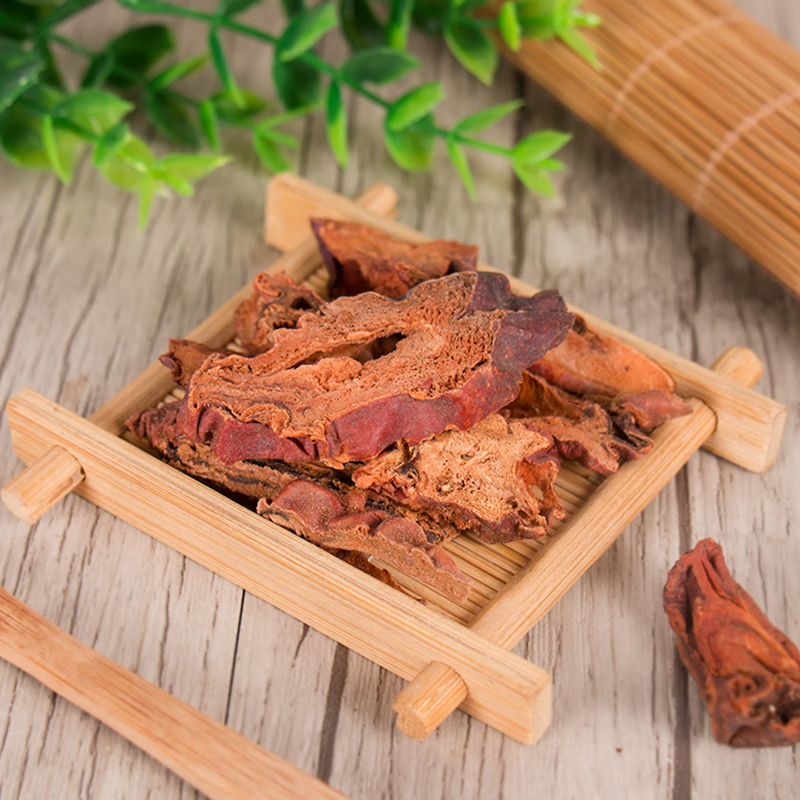







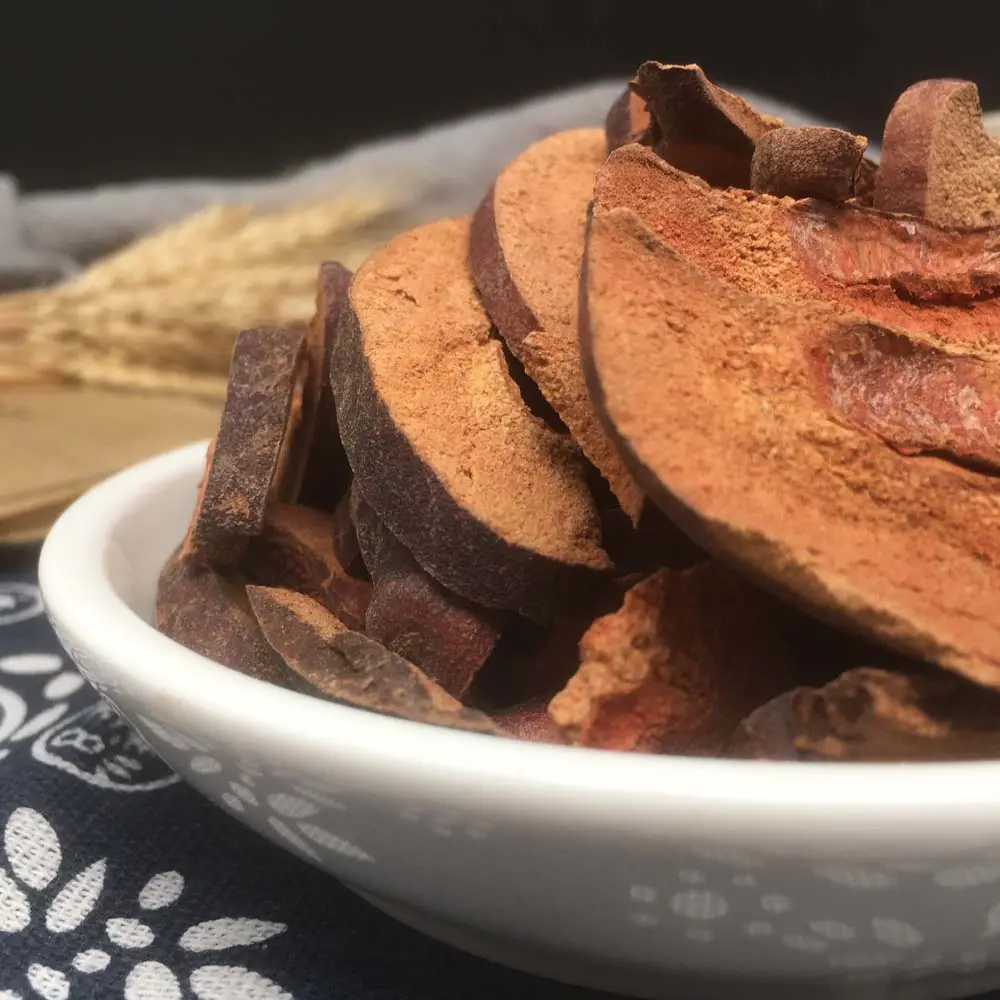


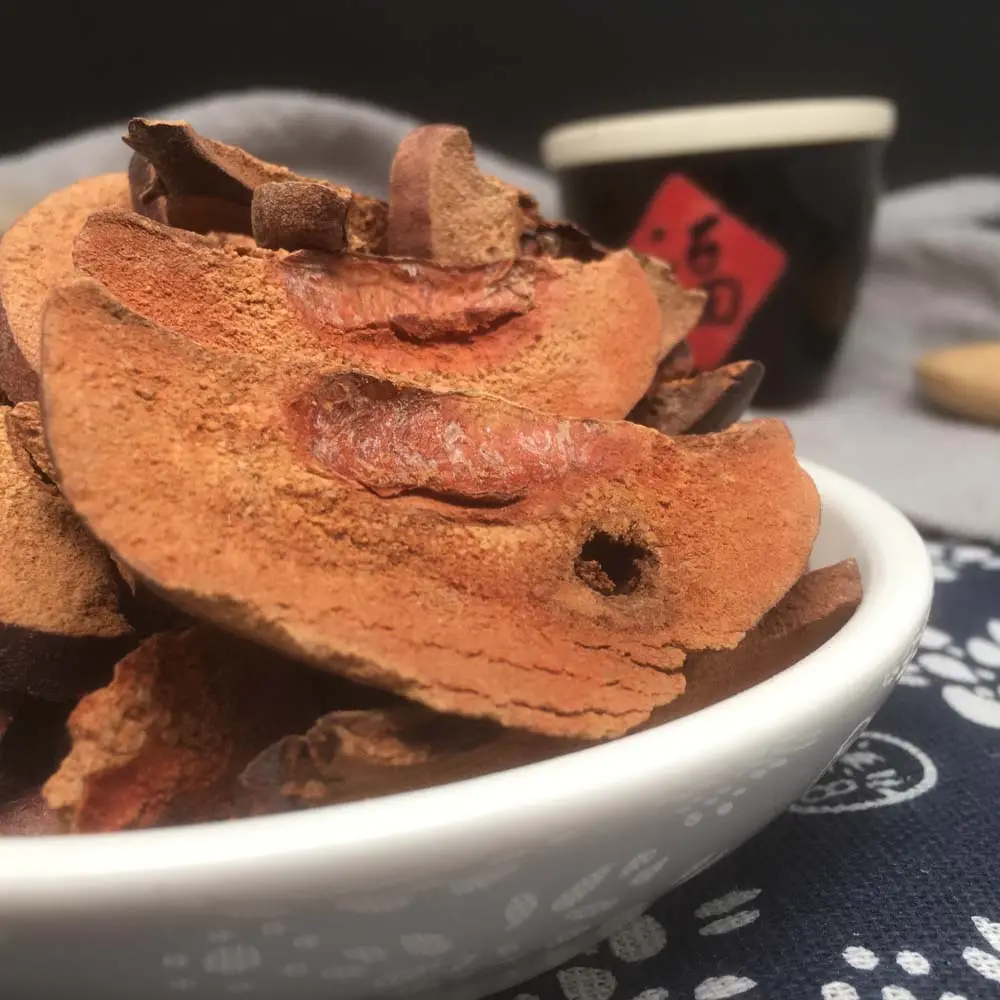
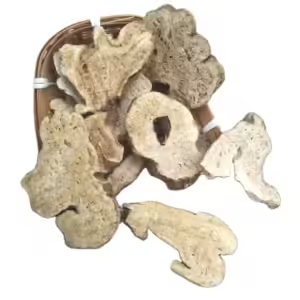
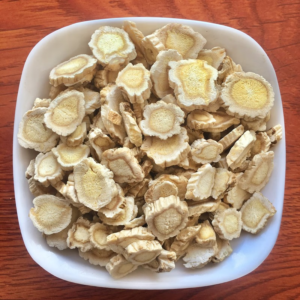
レビュー
レビューはまだありません。